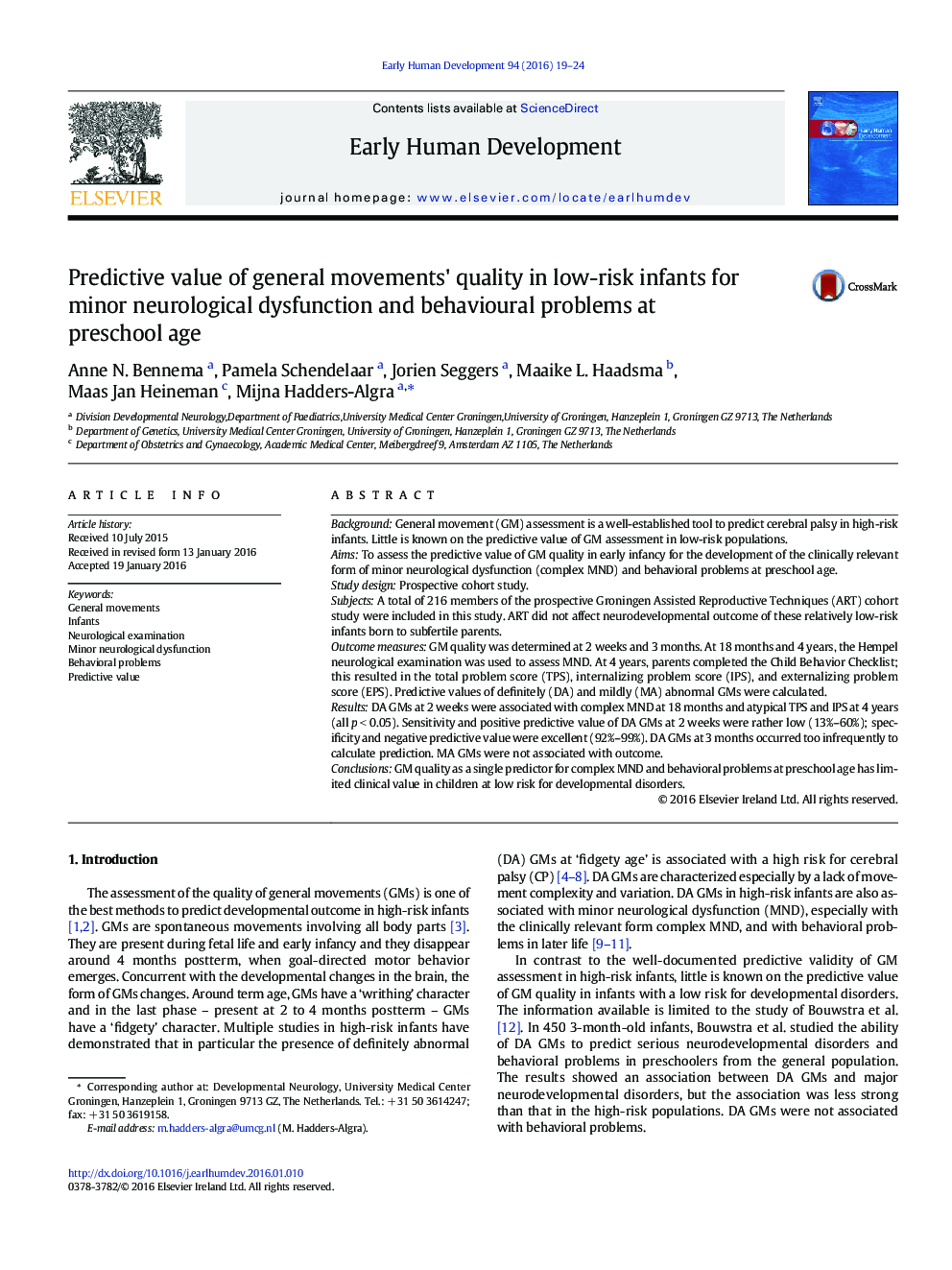| کد مقاله | کد نشریه | سال انتشار | مقاله انگلیسی | نسخه تمام متن |
|---|---|---|---|---|
| 3916478 | 1599472 | 2016 | 6 صفحه PDF | دانلود رایگان |
• General Movement (GM) assessment is one of the best methods to predict cerebral palsy in high-risk infants.
• This study addressed predictive value of GM-quality for neurodevelopmental preschool age in low-risk infants.
• Definitely abnormal (DA) GMs at 2 weeks were associated with minor neurodevelopmental impairments at preschool age.
• DA GMs had an excellent specificity and NPV, but a low sensitivity and PPV for minor neurodevelopmental impairments.
• Mildly abnormal GMs at 2 weeks and 3 months were not associated with neurodevelopmental outcome at preschool age.
BackgroundGeneral movement (GM) assessment is a well-established tool to predict cerebral palsy in high-risk infants. Little is known on the predictive value of GM assessment in low-risk populations.AimsTo assess the predictive value of GM quality in early infancy for the development of the clinically relevant form of minor neurological dysfunction (complex MND) and behavioral problems at preschool age.Study designProspective cohort study.SubjectsA total of 216 members of the prospective Groningen Assisted Reproductive Techniques (ART) cohort study were included in this study. ART did not affect neurodevelopmental outcome of these relatively low-risk infants born to subfertile parents.Outcome measuresGM quality was determined at 2 weeks and 3 months. At 18 months and 4 years, the Hempel neurological examination was used to assess MND. At 4 years, parents completed the Child Behavior Checklist; this resulted in the total problem score (TPS), internalizing problem score (IPS), and externalizing problem score (EPS). Predictive values of definitely (DA) and mildly (MA) abnormal GMs were calculated.ResultsDA GMs at 2 weeks were associated with complex MND at 18 months and atypical TPS and IPS at 4 years (all p < 0.05). Sensitivity and positive predictive value of DA GMs at 2 weeks were rather low (13%–60%); specificity and negative predictive value were excellent (92%–99%). DA GMs at 3 months occurred too infrequently to calculate prediction. MA GMs were not associated with outcome.ConclusionsGM quality as a single predictor for complex MND and behavioral problems at preschool age has limited clinical value in children at low risk for developmental disorders.
Journal: Early Human Development - Volume 94, March 2016, Pages 19–24
